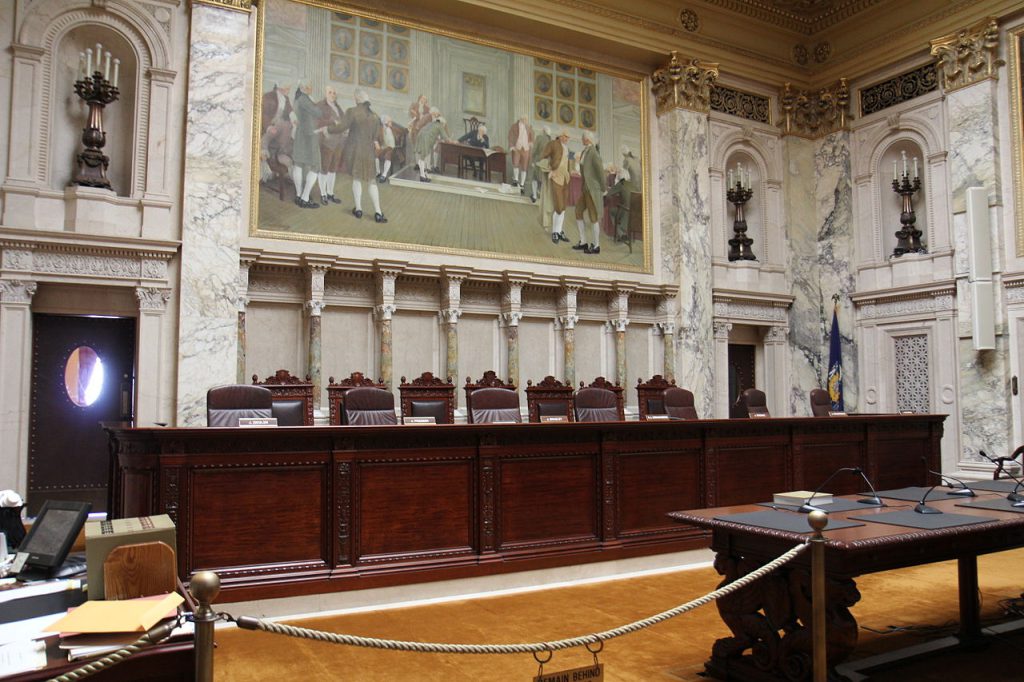
Published April 3, 2019
Republicans received an unexpected piece of good news on Tuesday night. Conservative Brian Hagedorn’s apparent narrow victory in a Wisconsin Supreme Court race underscores how close the Badger State is likely to be in 2020 — and how important it is to President Trump’s reelection chances.
Hagedorn won 50.2 percent to 49.8 percent despite liberal groups massively outspending him in favor of his opponent, Lisa Neubauer. Conservative groups such as the U.S. Chamber of Commerce which normally spend on judicial races stayed out, scared away by Hagedorn’s record of social conservatism. Progressives, on the other hand, were all in, seeing their chance to gain control of the court next year if they could hold on to this seat this year. But the spending advantage was to no avail, as Hagedorn ran nearly two percentage points ahead of Republican Gov. Scott Walker’s losing total from last November, while Neubauer barely improved on now-Gov. Tony Evers’ (D) 49.6 percent.
State Supreme Court races in Wisconsin are officially nonpartisan, but the races have long been unofficially partisan affairs, and the results have often followed partisan lines. Tuesday’s contest was no exception. The results for the court race mirrored those for last year’s governor’s racealmost precisely at the county level. Only four of Wisconsin’s 72 counties switched partisan hands, showing that Tuesday’s outcome was a partisan rather than an individual event.
Turnout was a factor, skewing somewhat in the Republicans’ favor. Measured as a percentage of the 2018 total vote, turnout was between 52 and 53 percent in the three heavily Republican suburban counties of Milwaukee. It was just more than 51 percent in the Democratic bastion of Dane County, home to the state capital of Madison; high, but slightly lower.
Other, less-wealthy and less-educated areas of the state had lower overall turnout rates, but Republican-trending areas still turned out at somewhat higher rates. Democratic counties such as La Crosse, Eau Claire and Portage had turnout rates of about 40 to 42 percent, while the Republican-trending counties in the Fox River Valley had rates between 41 and 45 percent. And heavily Democratic Milwaukee County had only a 38 percent turnout rate. The turnout differential was probably enough to fuel Hagedorn’s narrow victory.
But, in a sense, that is besides the point. Wisconsin was essentially a 50-50 state for the second-straight election. There’s little reason to think it won’t again be a toss-up in 2020. And it matters a lot because of the electoral college map.
Simply put, if Trump wins Wisconsin, he is almost certain to win reelection. That’s because a win for Trump in Wisconsin would likely mean victories for him in swing states that he carried that are more Republican than Wisconsin — such as Florida, Ohio, North Carolina and Iowa. He would likely even carry Arizona, despite the defeat of Republican Martha McSally there in November’s Senate race, as his approval rating was 51 percent in midterm exit polling. (McSally was later appointed to the Senate to finish the term of the late John McCain.)
Democrats might feel somewhat assured about their chances in Wisconsin, given that recent polls put Trump’s job approval there in the low 40s, but they should think again. The 2018 exit polling showed the president’s job approval in Wisconsin was 48 percent, higher than what other polls were reporting at the time, suggesting that current polls are missing a lot of silent Trump backers. One recent Emerson poll even shows that Trump support in an election will likely be much higher than his job approval rating. That poll showed his job approval at only 41 percent but had Trump receiving 46 percent against former vice president Joe Biden and 48 percent against Sen. Bernie Sanders (I-Vt.). Against the backdrop of a 50-50 state such as Wisconsin, that’s not much margin to make me feel comfortable if I were a Democrat.
Trump knows that he needs to win only the electoral college to get reelected, and that encourages him to double down on issues that motivates Republicans and blue-collar former Democrats. That coalition makes up about half the vote in Wisconsin, without Trump on the ballot and without a nationally known progressive as his opponent. Tuesday’s result should warm Republican hearts with the hope that maybe the president, despite everything, is becoming a slight favorite for reelection.
Henry Olsen is a Washington Post columnist and a senior fellow at the Ethics and Public Policy Center.








